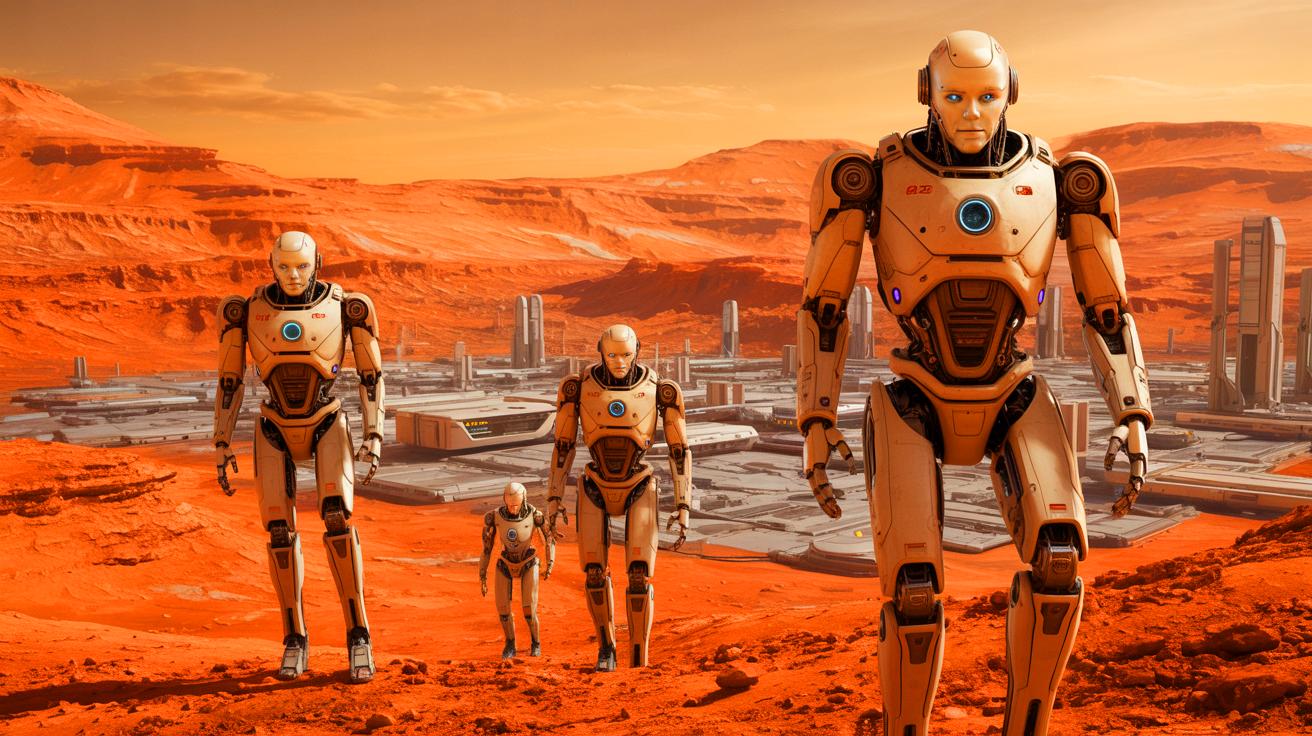IN A NUTSHELL
🤖 Elon Musk’s plan to send humanoid robots to Mars faces skepticism from robotics experts.
🌌 Current robotic technology may not withstand the Martian environment without human intervention.
🚀 Musk envisions Optimus robots playing a role in his colonization of Mars by 2026.
🛠 Alternative designs like snake robots may offer more practical solutions for planetary exploration.
Elon Musk’s vision of deploying autonomous androids to Mars as part of his ambitious colonization plans has captured public imagination. However, experts in robotics caution against the feasibility of this endeavor. Christian Hubicki, a leading robotics expert from Florida State University, has voiced skepticism about the viability of Musk’s humanoid robots on the Red Planet. Despite Musk’s bold claims and timelines, the reality of current robotic technology poses significant challenges. This article delves into the intricacies of robotics, Musk’s grand ambitions, and the hurdles that lie ahead for deploying humanoid robots on Mars.
The State of Humanoid Robotics
Humanoid robots, while fascinating and promising in their potential, are still in nascent stages of development. Christian Hubicki, head of the Optimal Robotics Laboratory, underscores the limitations of current humanoid technology. According to Hubicki, humanoids are prone to mechanical failures, such as falling and breaking, and their software can crash unexpectedly. These issues are exacerbated in autonomous settings, especially on Earth. The challenges multiply when considering deployment on Mars, with its harsh environment and lack of immediate human intervention.
Tesla’s Optimus robot exemplifies the current state of humanoid robotics. Musk aims to produce 100,000 units monthly, yet the technology has not proven its reliability or market viability. Recent demonstrations of Optimus have showcased its limitations, such as slow response times and awkward movements. These challenges highlight the gap between Musk’s aspirations and the technological reality of humanoid robots today.
Musk’s Vision of Mars Colonization
Elon Musk’s vision for Mars colonization is as ambitious as it is audacious. Central to this vision is the deployment of humanoid robots to prepare the Martian surface for human settlement. Musk envisions these robots exploring the planet and laying the groundwork for future colonization. He has set ambitious timelines, with plans to send robots to Mars by the end of 2026 and establish a self-sustaining city within 20 to 30 years.
However, the feasibility of these plans is questionable. The Starship rocket, intended to transport these robots, has faced numerous setbacks, raising doubts about its spaceworthiness. Additionally, the logistical challenges of maintaining and repairing robots on Mars, where human intervention is minimal, pose significant hurdles. As Hubicki points out, the absence of humans to rescue or repair robots makes the task of deploying them on Mars a daunting challenge.
Alternative Approaches to Planetary Exploration
While humanoid robots captivate the public imagination, other robotic designs may be more suited for planetary exploration. NASA, for example, is exploring creative robotic designs tailored to specific environmental challenges. One such innovation is a snake-like robot designed to navigate the icy moon Enceladus, potentially exploring its subsurface oceans. This versatile design could also be adapted for Martian terrain, offering an alternative to humanoid robots.
These specialized robots are designed to perform specific tasks in challenging environments, reducing the need for human-like capabilities. This approach emphasizes the importance of adapting robotic designs to meet the unique demands of alien terrains. While humanoid robots may one day play a role in space exploration, current technology suggests that alternative designs might offer more immediate solutions.
The Future of Robotics in Space
The future of robotics in space hinges on significant technological advancements. Hubicki suggests that without a major leap in humanoid reliability, deploying humanoids unaccompanied on Mars remains an improbable endeavor. The opportunity lies in developing robotic technologies that can operate autonomously and reliably in extreme environments.
Looking ahead, the focus may shift toward enhancing the functionality and resilience of specialized robotic designs. These advancements could pave the way for more effective exploration of distant worlds, whether through humanoid robots or other innovative designs. The pursuit of these advancements will determine the role of robotics in humanity’s quest to explore and settle other planets.
As Elon Musk continues to assert his vision for Mars colonization, the challenges of deploying humanoid robots in space remain significant. While technological advances may eventually bridge the gap between aspiration and reality, the journey is fraught with complexities. How will the future of robotics evolve to address these challenges, and what role will they play in shaping humanity’s extraterrestrial ambitions?
This article is based on verified sources and supported by editorial technologies.
Did you like it? 4.4/5 (20)

